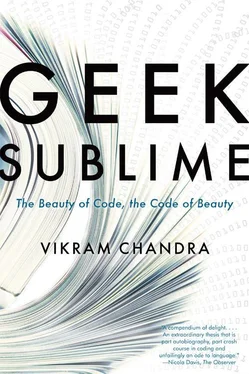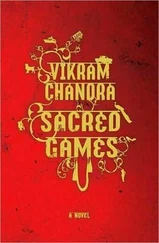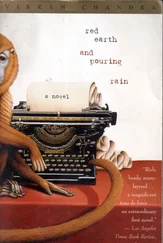It would be a mistake to reduce this worship of Shakti to only an acknowledgment of biological reproductive power, or of genital sexuality. Urban very correctly argues that
the Indian concept of kama contains a vast range of meanings that include, but far exceed, the level of sexual desire that has so long preoccupied modern observers. So too, the concept of shakti contains yet far transcends mere political power, also embracing the vital energy that pervades the cosmos, social order, and human body alike. 6
In the Tantras, descriptions of sexual practices comprise a tiny fraction of the whole, which usually includes wide-ranging discussions of rituals, metaphysical speculations, and enumerations of deities and the powers they represent; people who have been told that Tantra is “exotic sex” are usually bored witless when they actually try to read one of these texts. Medieval Indians wouldn’t have found the sex, qua sex, especially titillating; kama was one of the legitimate aims of life, and sex within the constraints of dharma or ethical conduct was often depicted quite frankly. For instance, the Girvanavanmanjari , a seventeenth-century “Easy Sanskrit” primer, is set up as a dialogue between a husband and a wife, which swiftly turns into a teasing erotic game in which each partner accuses the other of being too bashful; the book ends “in the climax of śṛńgāra , with the happy union of the Brāhmana householder and his wife.” 7
The deviance of the Tantric systems has more to do with their cosmology and their soteriology. Many of the Tantric lineages are shakta —they worship the goddess as the ultimate reality — and many of them regard kama not as something to be avoided or discarded on the road to salvation, but as an essential motive force in the human quest for the ultimate reality. So, in these systems, pleasure is good — the joys of the body and mind are not distractions or illusions. According to the Kularnava Tantra ,
[In other systems] the yogi cannot be a bhogi [enjoyer, epicure], and a bhogi cannot be a knower of Yoga. However, O Beloved [Goddess], [the path of the] Kaula [lineage], which is superior to all other systems, is of the essence of bhoga [enjoyment] and yoga. O Mistress of the kula [family]! In the kula teaching, bhoga becomes yoga , and the world becomes a state of liberation. 8
The Tantric who belongs to one of these lineages uses all experience, even that which may be socially prohibited or psychologically forbidding and therefore inhibiting of self-recognition. And so the followers of these “left-handed” paths sought spiritual advancement through transgression, through ritual disruptions of the rules of purity and social order. For the advanced practitioner or initiate, the secret and dangerous rites of left-handed Tantra — always approached under the guidance of a guru — were a means of shattering the norms of the normal so that one could know the true, undifferentiated self; this is why these ceremonies included the ritualized consumption of meat and wine, and socially unsanctioned sex — all anathema to Brahminic notions of purity. That which was outside the bounds of purity was to be shut out, according to Vedic norms, but the Tantrics recognized that what was expelled was also tremendously powerful; the Kamakhya temple is shut when the goddess is menstruating because she is then “impure,” but her menstrual flow brings life force to the earth. There is a
profound ambivalence [about] the goddess’ blood and the power that it embodies, a power that is tied to impurity and to the dangerous potency of sexual fluids … The goddess’ menstrual blood is the very essence of this contaminating, chaotic but creative force [from which the world emerges]. 9
Some Tantrics sought extreme versions of this antinomian contact with the impure — the Kapalikas carried skulls as begging bowls, smeared themselves with the ashes from cremation grounds, offered blood, meat, alcohol, and sexual fluids to their deities and consumed them as well; they were reputed to practice human sacrifice and ritual ingestion of human flesh. The discipline of the Kapalikas was intended to induce a purposeful derangement from all prescribed norms and notions of otherness and distinction; the Kapalika saw all creation as one.
Members of the orthodox mainstream were fascinated and horrified by such practitioners. Kapalikas were reputed to have fearsome magical powers, and they show up as sinister villains in many narratives. Tantrics of various hues also are depicted as dissemblers and charlatans. In a play by Rajashekhara, a late-ninth-century poet and critic, a Tantric gleefully proclaims:
I don’t know mantra from tantra,
Nor meditation or anything about a teacher’s grace.
Instead, I drink cheap booze and enjoy some woman.
But I sure am going on to liberation, since I got the [Tantric]
Kula path.
What’s more,
I took some horny slut and consecrated her my “holy wife.”
Sucking up booze and wolfing down red meat,
My “holy alms” are whatever I like to eat,
My bed is but a piece of human skin.
Say, who wouldn’t declare this Kaula Religion
Just about the most fun you can have? 10
But there were also Tantric traditions more attractive to the householder, the person living within society. Abhinavagupta was the most famous and influential member of one such lineage, the Trika branch of a collection of philosophical doctrines and theologies that are sometimes referred to as “Kashmir Shaivism.” In his magnum opus Tantraloka (Light of the Tantras), Abhinavagupta provides a widespread survey and synthesis of all these strands, and an exposition of how all these traditions are subsumed into the “most excellent” form of Shaivism, the Trika (“Triad,” for the many triples in its cosmology, including its trio of iconic shakti s representing the transcendent; the transcendent within the material; and the material). 11In the Tantraloka and later works, Abhinavagupta marries the mystical rituals and esoteric sexual practices of an existing left-handed tradition, the Kaula (from kula , group or family), to the sophisticated metaphysical speculations of Pratyabhijna , “The Doctrine of Recognition.”
According to the Pratyabhijna philosophers, the absolute origin of all that exists, the anuttara —that beyond which there is nothing — is a singular infinite, primordial, undivided consciousness, Chiti , which exists before time and space. The first step or spanda —vibration — toward the unfolding of the phenomenal universe is the foregrounding of the prakasha of this consciousness, of its self-illumining fullness. The next state is a negation of this fullness, a void that is vimarsha , self-referential awareness, consciousness as energy. The spanda or vibration between prakasha and vimarsha , the throb of kama between fullness and void, between 1 and 0, overflows as a completely free, blissful creative energy, ananda shakti. This creative dynamism, which is totally free ( svatantrya ), sets in motion a complex series of further developments which result in the projections of subject and object, materiality, individuality — in other words, all that we know and experience. “Through her own will power, Citi unfolds the universe on a portion of herself.” 12
So the entire universe is within Chiti , and is an abhasa —usually translated as “appearance,” but I think better understood here as something like “simulation.” We are inside a giant Holodeck of Consciousness, and what we think of as our own subjectivity is a wilfully contracted portion of Chiti herself. This does not mean we are “unreal,” or that the phenomenal world is somehow illusory or false; within the simulation, the laws of physics are very real and absolute. That brick over there does really exist outside of me, and if you throw it at my head, I will bleed, and my pain will be as real as the brick and you. The universe and you and I and the brick are all epistemically real. But what has been veiled from my mundane consciousness is that the brick, you, myself, and my qualia are all Chiti herself; my experience of my own subjectivity, my vimarsha , is a contraction of Chiti ’s principle of self-reflexivity, her dynamic Shakti-tattva or idam , which “gives rise to self-awareness, will, knowledge, and action.” 13 Pratyabhijna is therefore sometimes understood as a supreme monism that subsumes dualism; it is a “Transcendental Realism” that does not deny at all the reality of multiplicity, but locates under that multiplicity a substrate of Chiti , consciousness.
Читать дальше












